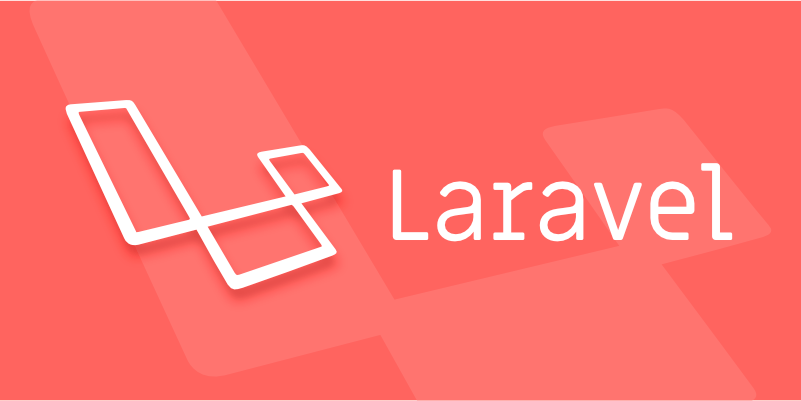Laravel Facades is a way to access objects in a service container through a static interface, simplifying the dependency injection process. They provide developers with concise and intuitive syntax, such as Cache::get() or Auth::user(), which is actually parsed by the service container to perform operations. The advantages of using Facades include: 1. Simplify the call method, no need to manually parse containers or construct injections; 2. Improve code readability; 3. Support test mocks. Common built-in Facades are DB, Auth, Request, Session, Redirect, Response and View. However, attention should be paid to avoid abuse, prevent unclear class responsibilities and hidden dependencies, which affect maintenance and expansion. The rational use of Facades can effectively improve development efficiency without sacrificing code quality.

Laravel Facades is a framework that provides a simple way to access objects in a service container. They allow you to use Laravel's core classes without manual dependency injection, such as Cache , DB , Auth , etc. Facades exists to improve development efficiency and code readability.

What is Laravel Facades?
Simply put, Facades is a class that provides a static interface to another class . In Laravel, you may see code like this:
use Illuminate\Support\Facades\Cache;
Route::get('/cache', function () {
return Cache::get('key');
}); Cache here is a Facade, and behind it is actually calling the underlying service implementation class. Although it seems to be a "static method", it is essentially done by parsing out instances through Laravel's service container.

Why use Facades?
- Simplified calling : no need to parse services from the container every time, nor do constructor injection.
- Improve readability :
Auth::user()is more intuitive than$this->auth->user(). - Convenient testing : Facades can be mocked without affecting the actual logic operation.
But also note that Facades are not "master keys" . Overuse can make classes difficult to maintain and easily hide dependencies.
Common Facades examples
Laravel provides multiple built-in Facades, and the following are some common examples:

-
DB: used for database query -
Auth: Processing user authentication -
Request: Get request information -
Session: Manage session data -
RedirectandResponse: Control response behavior -
View: Rendering view
Instead of directly new objects or manually injecting dependencies, you can select the appropriate Facade based on the functionality you are currently using.
Things to note when using Facades
Although Facades are convenient, there are some places to pay attention to:
- Avoid abuse in complex business logic : If you use Facades in a large number of classes, it may mean that the class has too heavy responsibilities or the dependencies are not clear.
- Don't treat Facades as an excuse for singleton usage : Some developers use Facades directly to "lazy" and do not do dependency injection, which may lead to difficulty in scaling in the later stage.
- Remember mock when testing : Although Facades supports mock, you still need to be careful when writing unit tests.
Overall, Laravel Facades is a very practical design pattern that allows developers to call various services in the system more easily. As long as it is used reasonably, it will not cause too much problem.
The above is the detailed content of What are Laravel Facades and their purpose?. For more information, please follow other related articles on the PHP Chinese website!

Hot AI Tools

Undress AI Tool
Undress images for free

Undresser.AI Undress
AI-powered app for creating realistic nude photos

AI Clothes Remover
Online AI tool for removing clothes from photos.

Clothoff.io
AI clothes remover

Video Face Swap
Swap faces in any video effortlessly with our completely free AI face swap tool!

Hot Article

Hot Tools

Notepad++7.3.1
Easy-to-use and free code editor

SublimeText3 Chinese version
Chinese version, very easy to use

Zend Studio 13.0.1
Powerful PHP integrated development environment

Dreamweaver CS6
Visual web development tools

SublimeText3 Mac version
God-level code editing software (SublimeText3)
 Working with pivot tables in Laravel Many-to-Many relationships
Jul 07, 2025 am 01:06 AM
Working with pivot tables in Laravel Many-to-Many relationships
Jul 07, 2025 am 01:06 AM
ToworkeffectivelywithpivottablesinLaravel,firstaccesspivotdatausingwithPivot()orwithTimestamps(),thenupdateentrieswithupdateExistingPivot(),managerelationshipsviadetach()andsync(),andusecustompivotmodelswhenneeded.1.UsewithPivot()toincludespecificcol
 Sending different types of notifications with Laravel
Jul 06, 2025 am 12:52 AM
Sending different types of notifications with Laravel
Jul 06, 2025 am 12:52 AM
Laravelprovidesacleanandflexiblewaytosendnotificationsviamultiplechannelslikeemail,SMS,in-appalerts,andpushnotifications.Youdefinenotificationchannelsinthevia()methodofanotificationclass,andimplementspecificmethodsliketoMail(),toDatabase(),ortoVonage
 Understanding Dependency Injection in Laravel?
Jul 05, 2025 am 02:01 AM
Understanding Dependency Injection in Laravel?
Jul 05, 2025 am 02:01 AM
Dependency injection automatically handles class dependencies through service containers in Laravel without manual new objects. Its core is constructor injection and method injection, such as automatically passing in the Request instance in the controller. Laravel parses dependencies through type prompts and recursively creates the required objects. The binding interface and implementation can be used by the service provider to use the bind method, or singleton to bind a singleton. When using it, you need to ensure type prompts, avoid constructor complications, use context bindings with caution, and understand automatic parsing rules. Mastering these can improve code flexibility and maintenance.
 Strategies for optimizing Laravel application performance
Jul 09, 2025 am 03:00 AM
Strategies for optimizing Laravel application performance
Jul 09, 2025 am 03:00 AM
Laravel performance optimization can improve application efficiency through four core directions. 1. Use the cache mechanism to reduce duplicate queries, store infrequently changing data through Cache::remember() and other methods to reduce database access frequency; 2. Optimize database from the model to query statements, avoid N 1 queries, specifying field queries, adding indexes, paging processing and reading and writing separation, and reduce bottlenecks; 3. Use time-consuming operations such as email sending and file exporting to queue asynchronous processing, use Supervisor to manage workers and set up retry mechanisms; 4. Use middleware and service providers reasonably to avoid complex logic and unnecessary initialization code, and delay loading of services to improve startup efficiency.
 Managing database state for testing in Laravel
Jul 13, 2025 am 03:08 AM
Managing database state for testing in Laravel
Jul 13, 2025 am 03:08 AM
Methods to manage database state in Laravel tests include using RefreshDatabase, selective seeding of data, careful use of transactions, and manual cleaning if necessary. 1. Use RefreshDatabasetrait to automatically migrate the database structure to ensure that each test is based on a clean database; 2. Use specific seeds to fill the necessary data and generate dynamic data in combination with the model factory; 3. Use DatabaseTransactionstrait to roll back the test changes, but pay attention to its limitations; 4. Manually truncate the table or reseed the database when it cannot be automatically cleaned. These methods are flexibly selected according to the type of test and environment to ensure the reliability and efficiency of the test.
 Choosing between Laravel Sanctum and Passport for API authentication
Jul 14, 2025 am 02:35 AM
Choosing between Laravel Sanctum and Passport for API authentication
Jul 14, 2025 am 02:35 AM
LaravelSanctum is suitable for simple, lightweight API certifications such as SPA or mobile applications, while Passport is suitable for scenarios where full OAuth2 functionality is required. 1. Sanctum provides token-based authentication, suitable for first-party clients; 2. Passport supports complex processes such as authorization codes and client credentials, suitable for third-party developers to access; 3. Sanctum installation and configuration are simpler and maintenance costs are low; 4. Passport functions are comprehensive but configuration is complex, suitable for platforms that require fine permission control. When selecting, you should determine whether the OAuth2 feature is required based on the project requirements.
 Implementing Database Transactions in Laravel?
Jul 08, 2025 am 01:02 AM
Implementing Database Transactions in Laravel?
Jul 08, 2025 am 01:02 AM
Laravel simplifies database transaction processing with built-in support. 1. Use the DB::transaction() method to automatically commit or rollback operations to ensure data integrity; 2. Support nested transactions and implement them through savepoints, but it is usually recommended to use a single transaction wrapper to avoid complexity; 3. Provide manual control methods such as beginTransaction(), commit() and rollBack(), suitable for scenarios that require more flexible processing; 4. Best practices include keeping transactions short, only using them when necessary, testing failures, and recording rollback information. Rationally choosing transaction management methods can help improve application reliability and performance.
 Handling HTTP Requests and Responses in Laravel.
Jul 16, 2025 am 03:21 AM
Handling HTTP Requests and Responses in Laravel.
Jul 16, 2025 am 03:21 AM
The core of handling HTTP requests and responses in Laravel is to master the acquisition of request data, response return and file upload. 1. When receiving request data, you can inject the Request instance through type prompts and use input() or magic methods to obtain fields, and combine validate() or form request classes for verification; 2. Return response supports strings, views, JSON, responses with status codes and headers and redirect operations; 3. When processing file uploads, you need to use the file() method and store() to store files. Before uploading, you should verify the file type and size, and the storage path can be saved to the database.






